
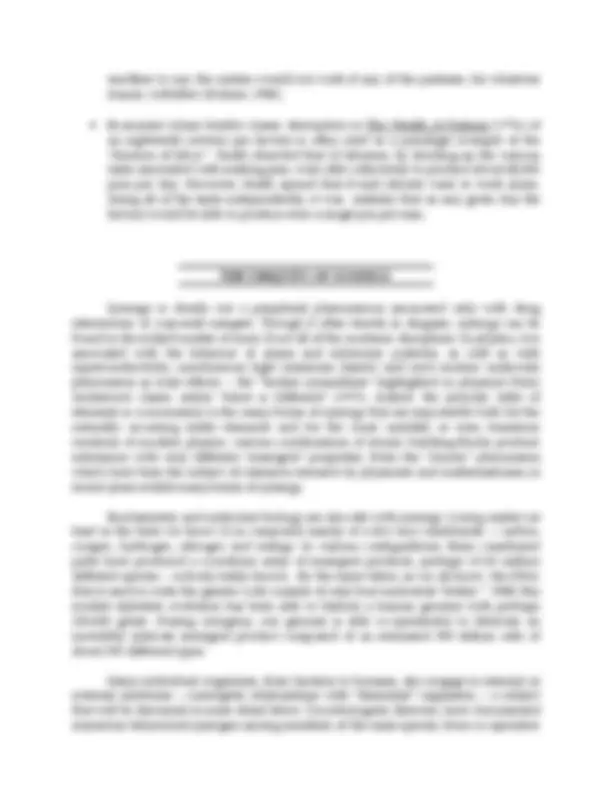
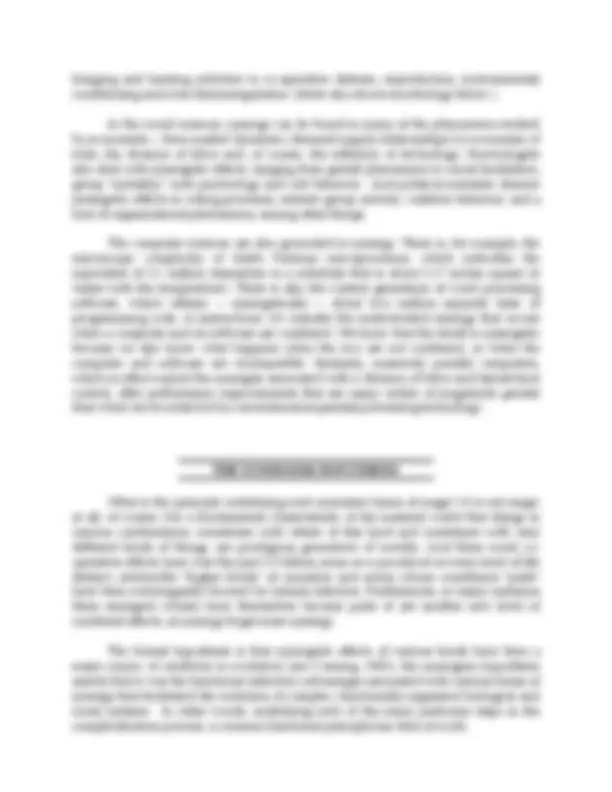
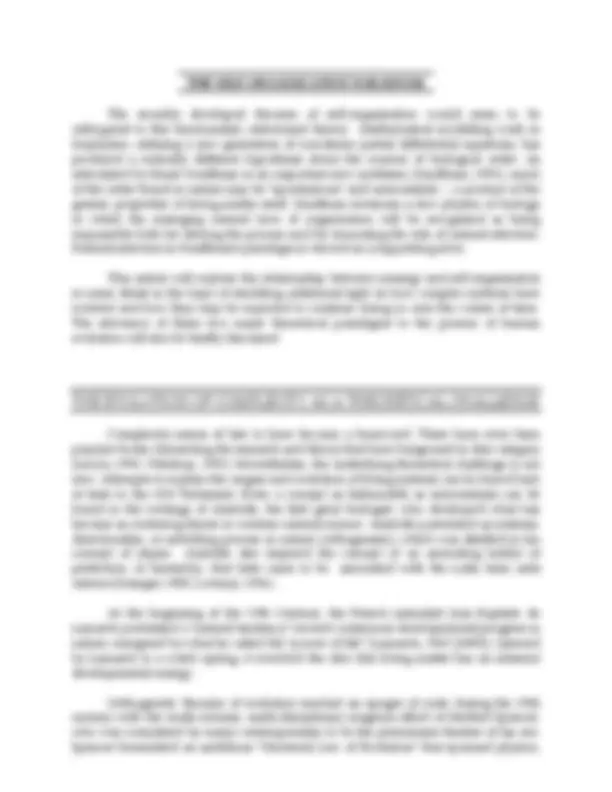
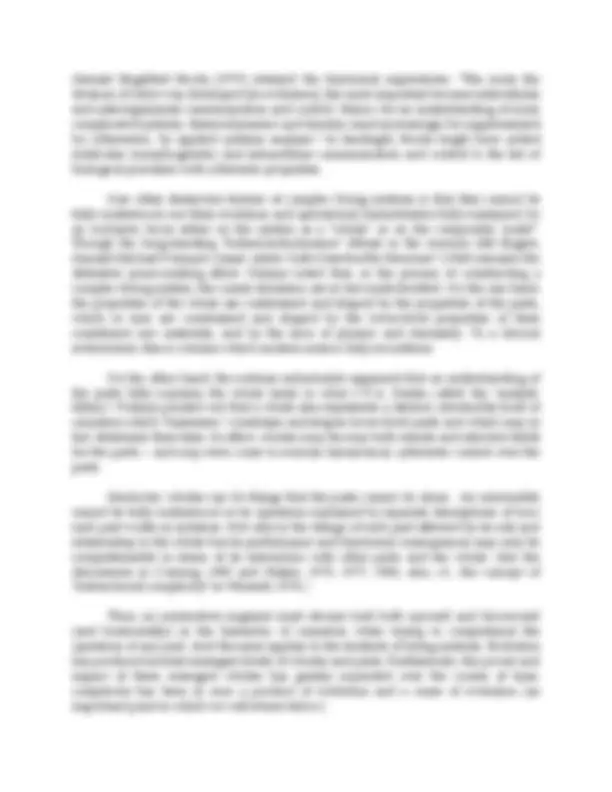
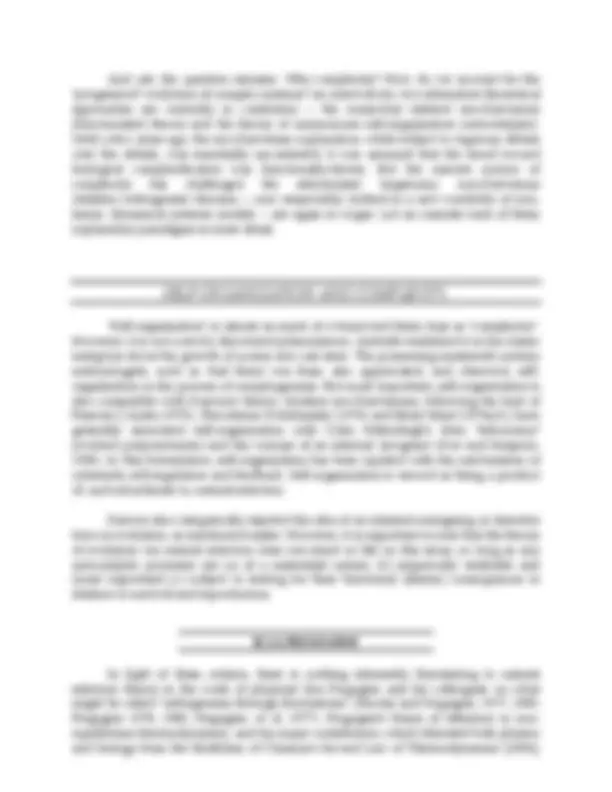
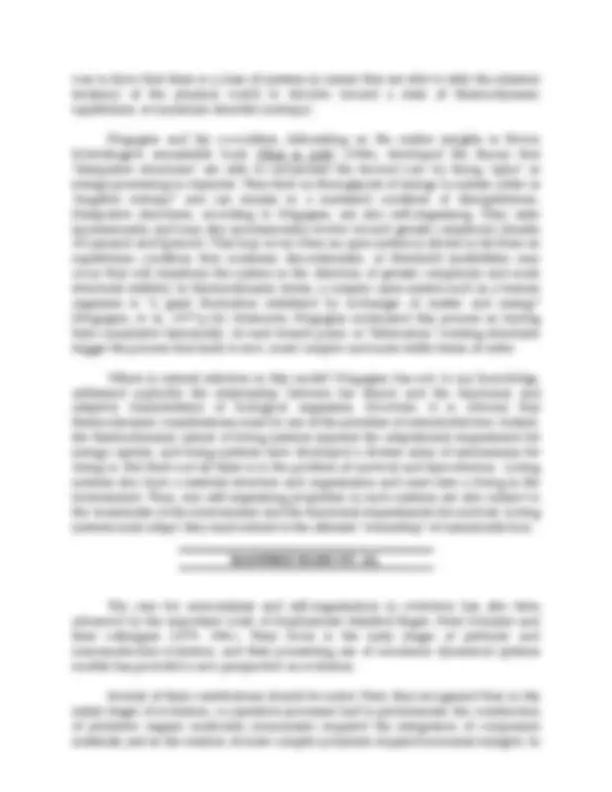
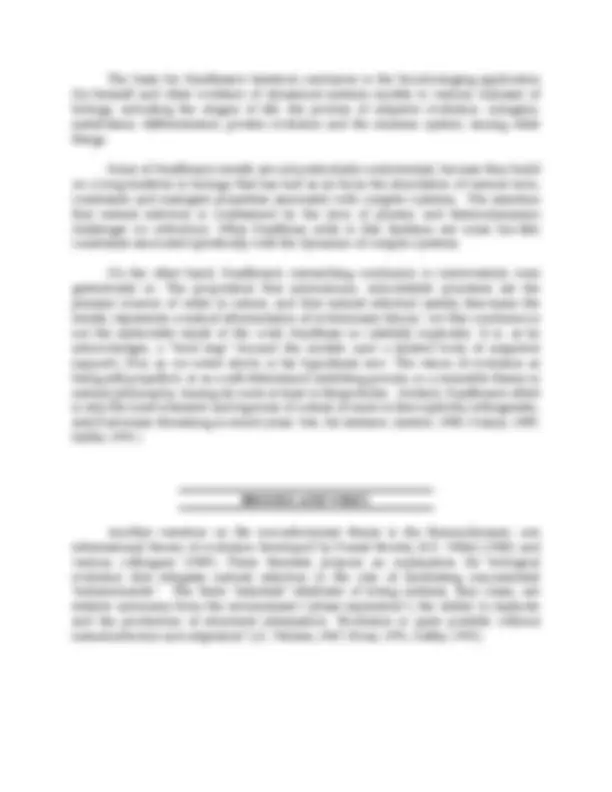
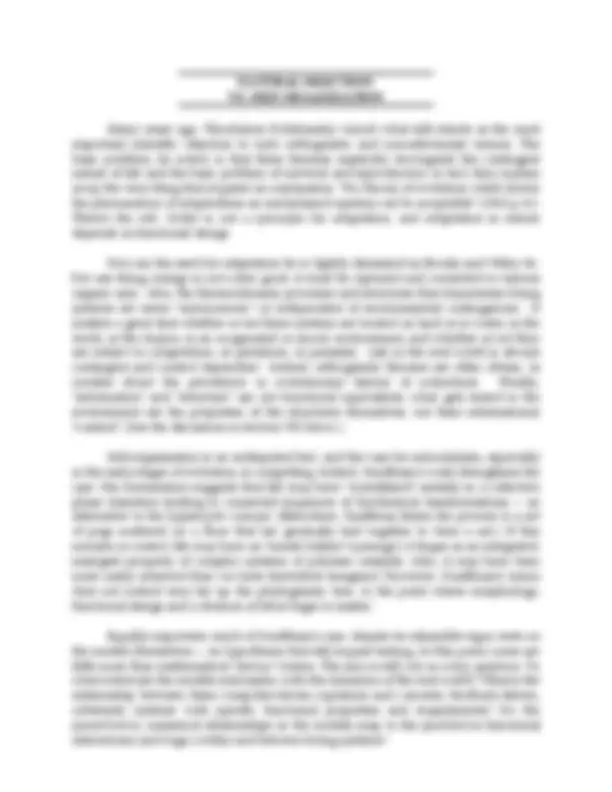
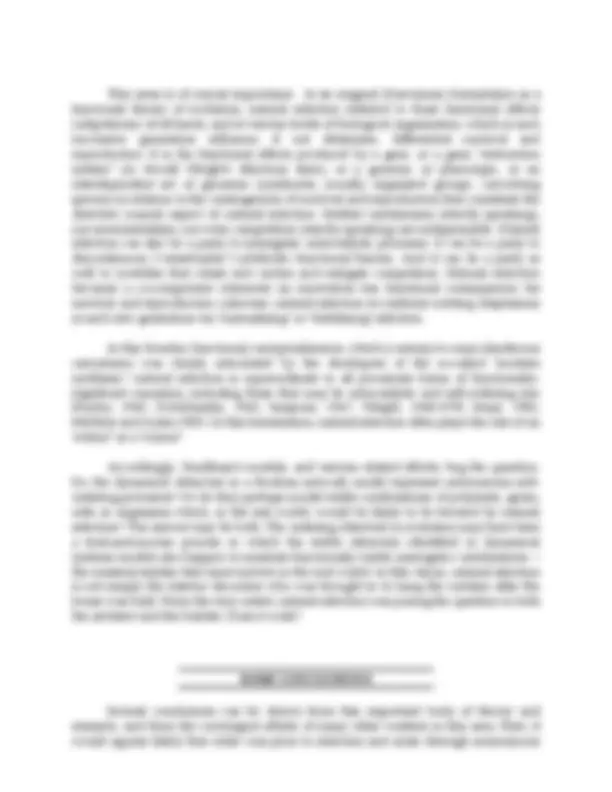
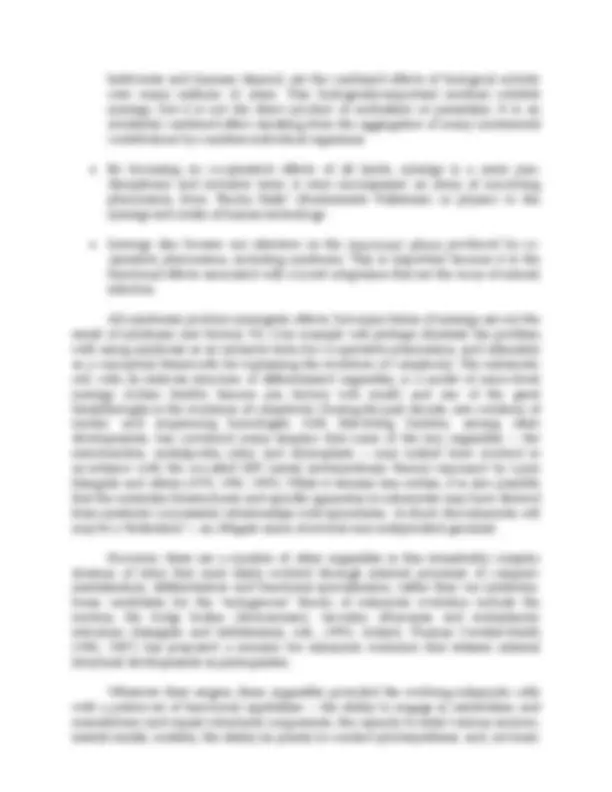
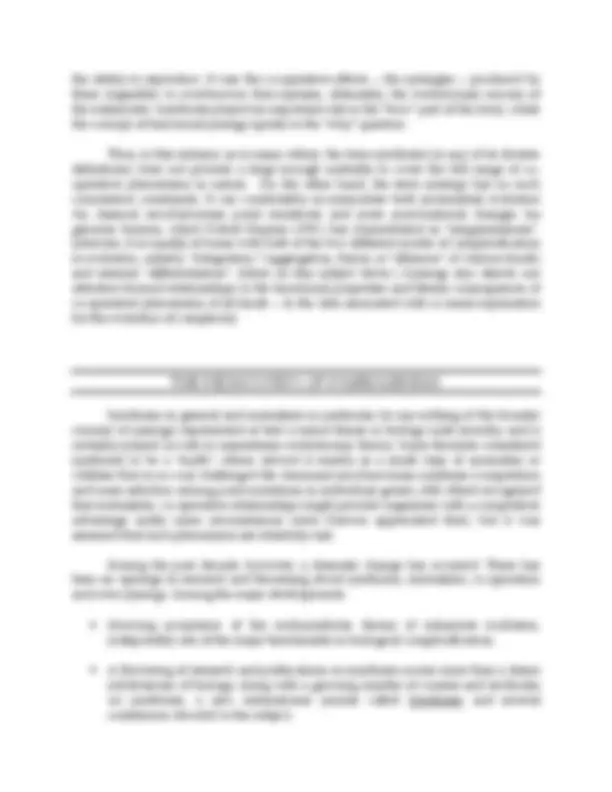


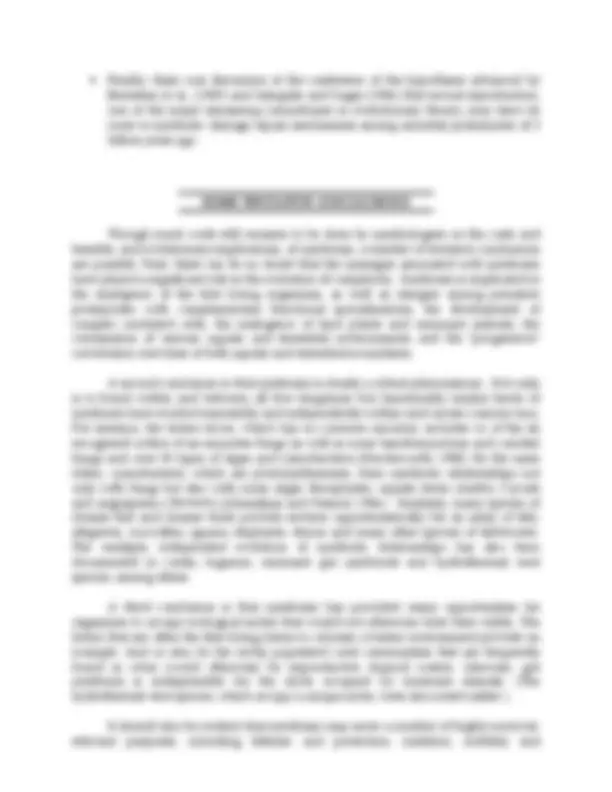
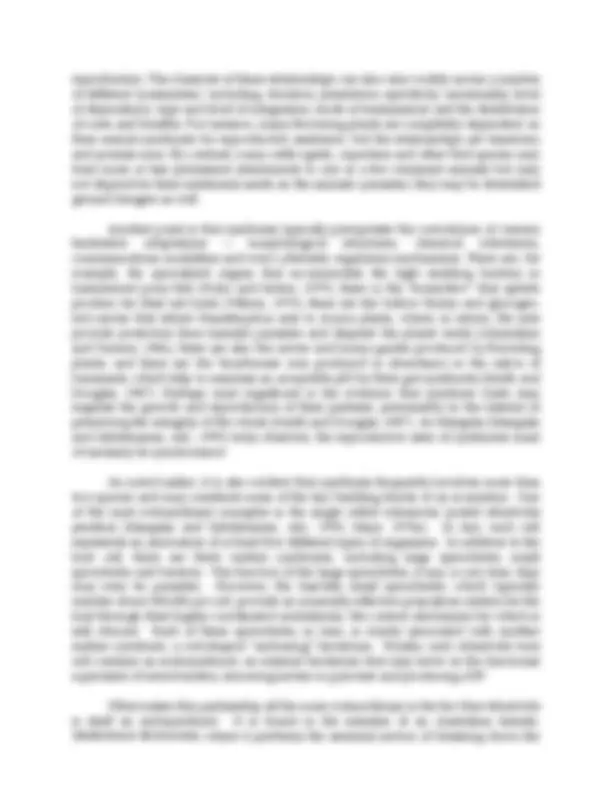




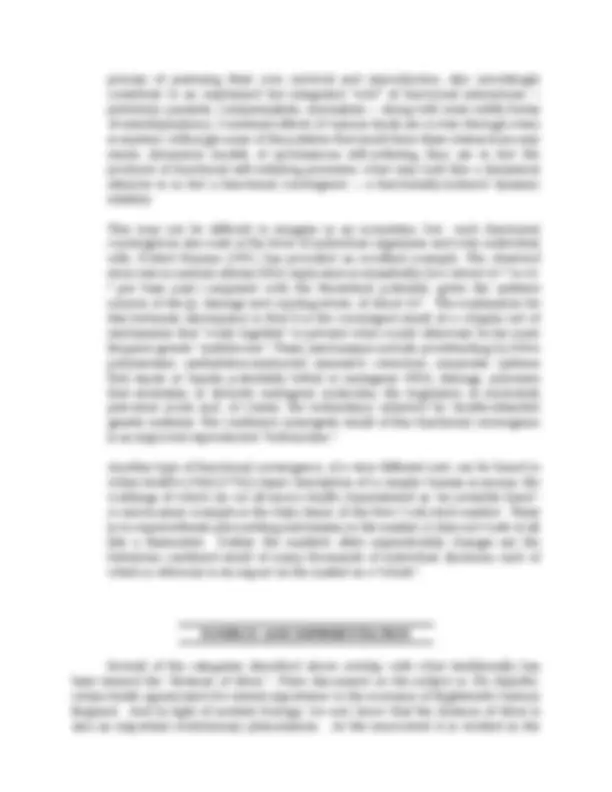
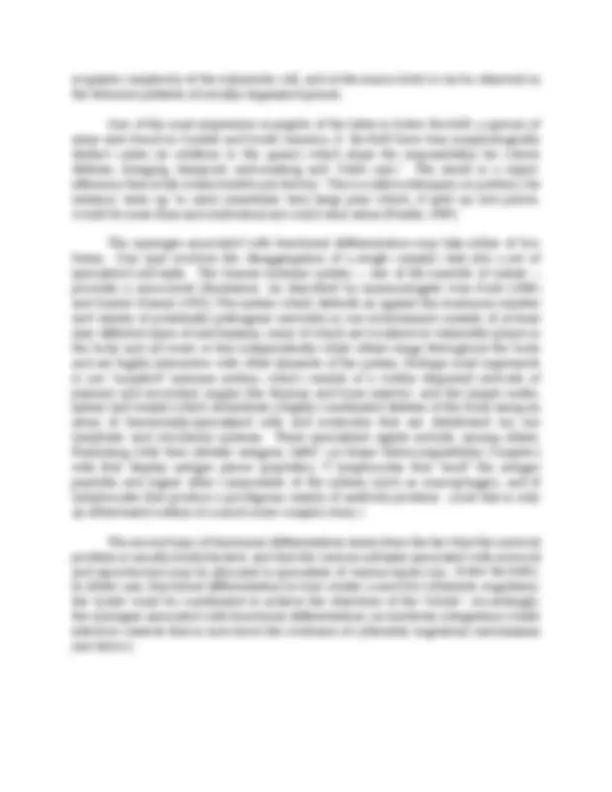
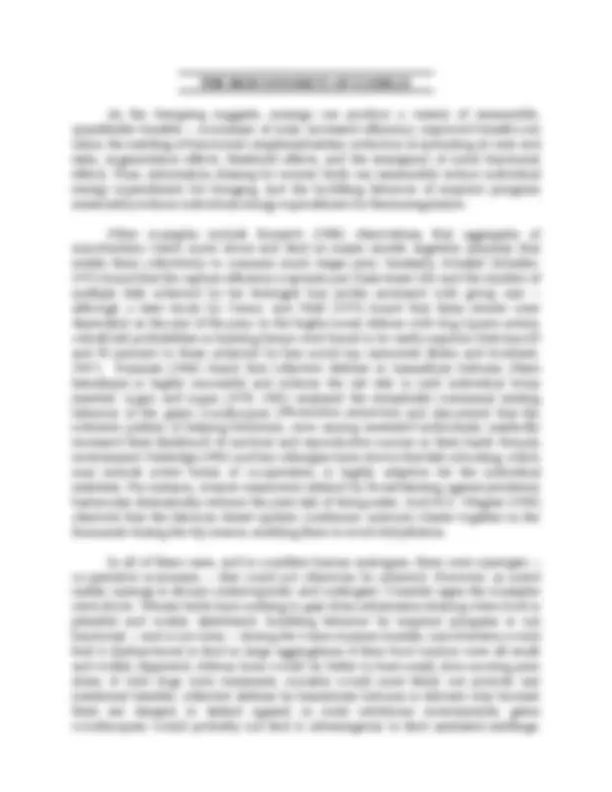
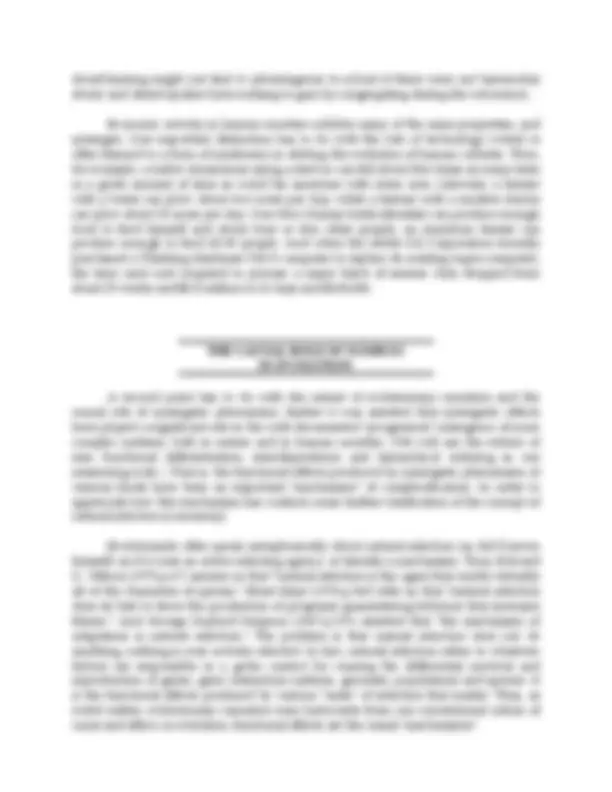
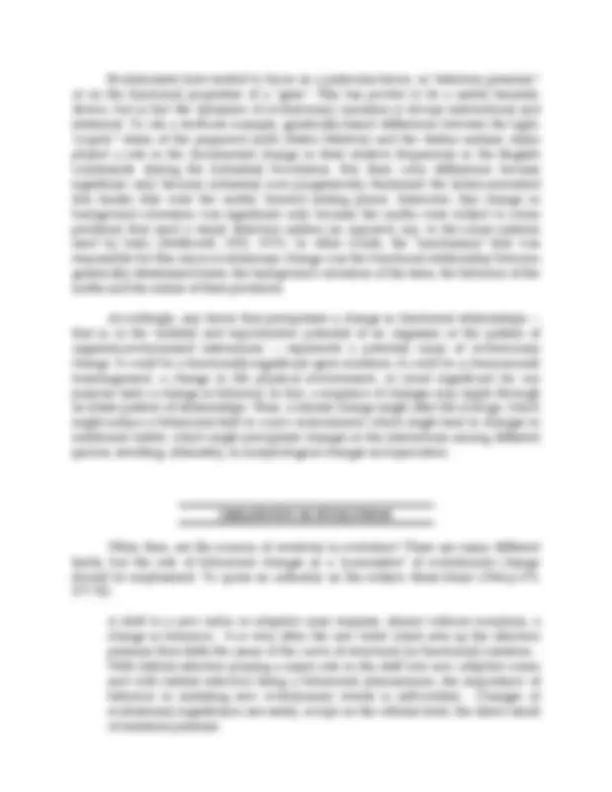
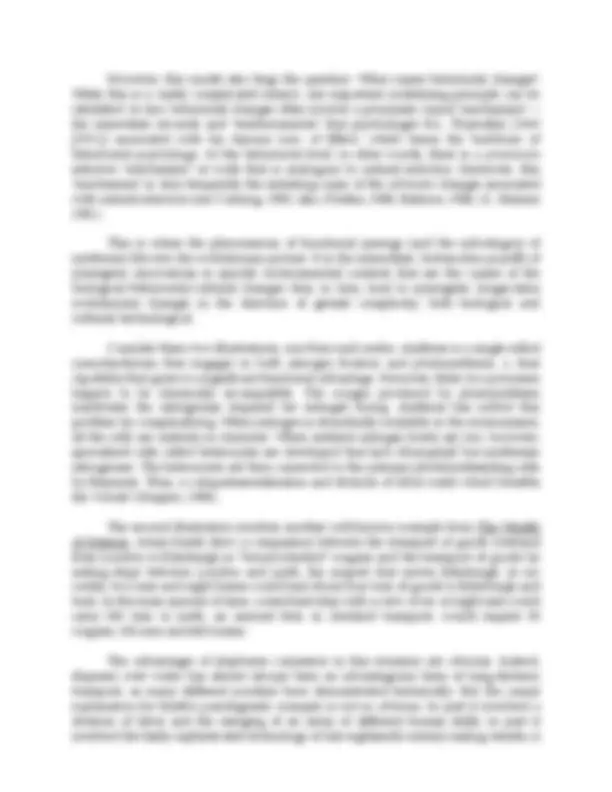
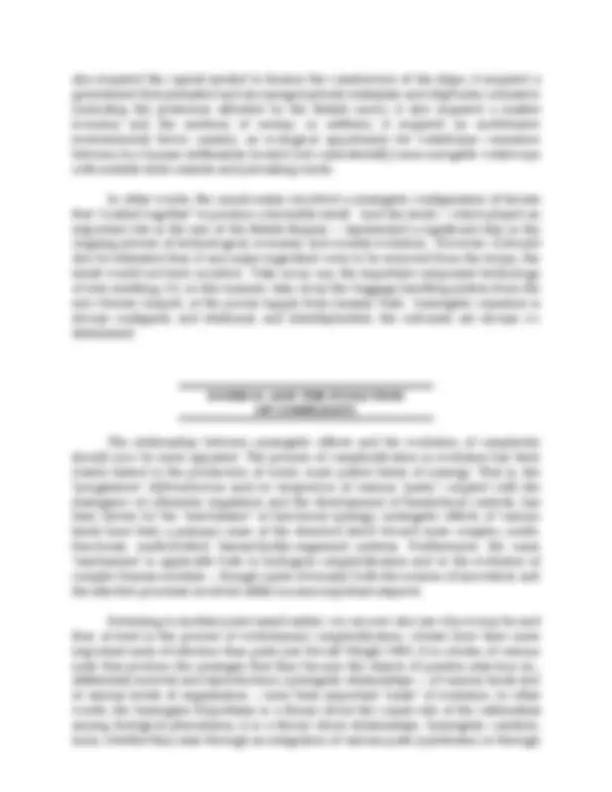
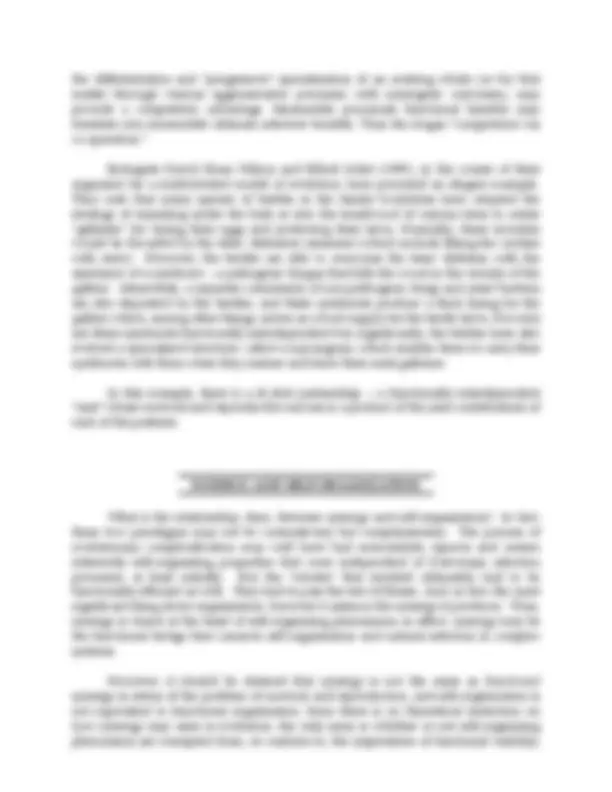
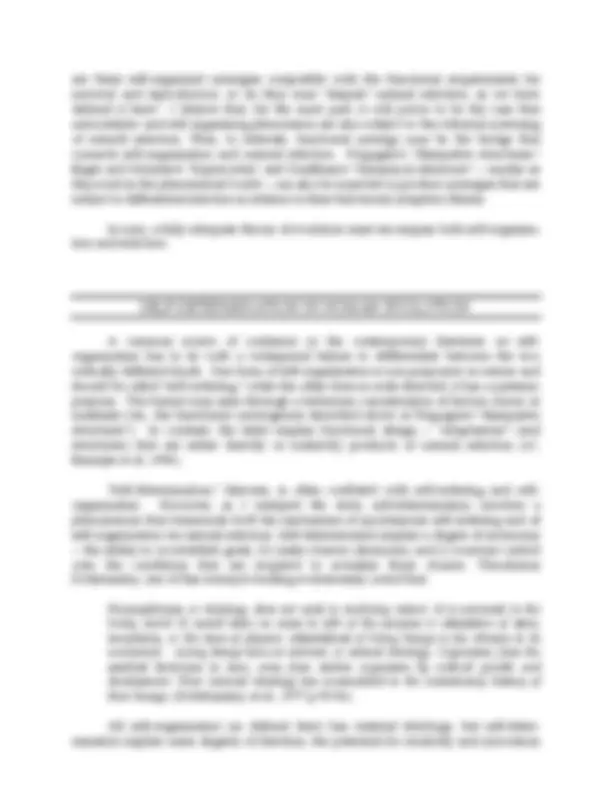
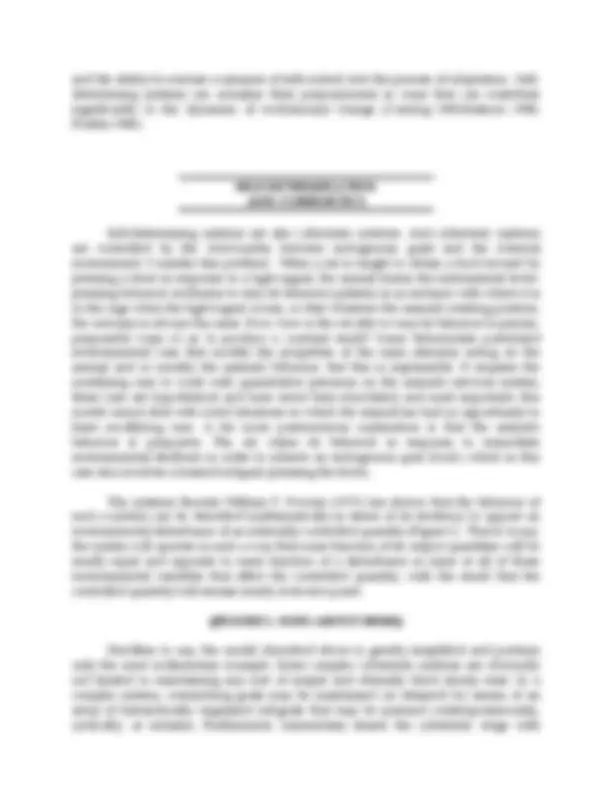
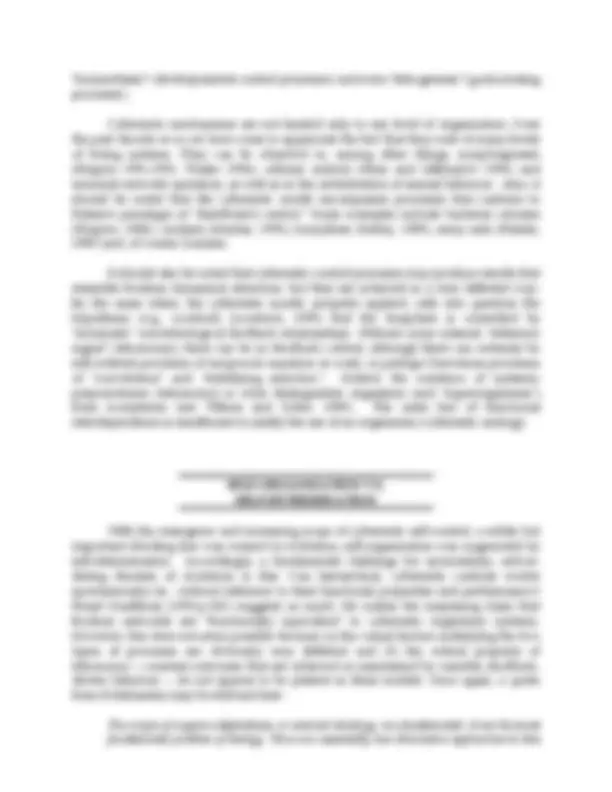
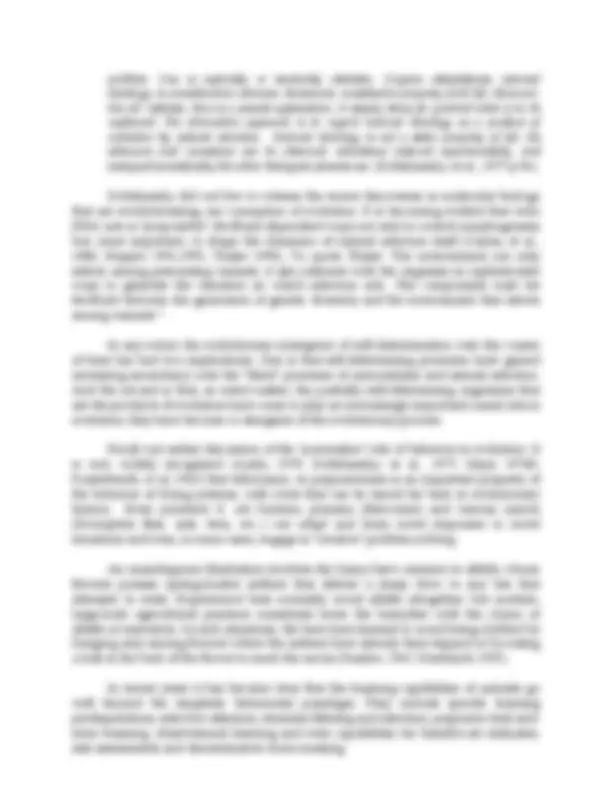
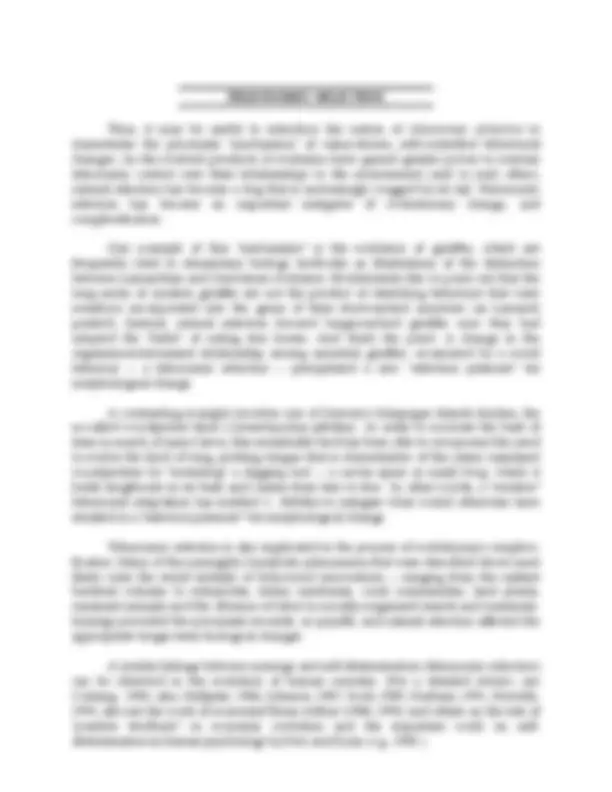
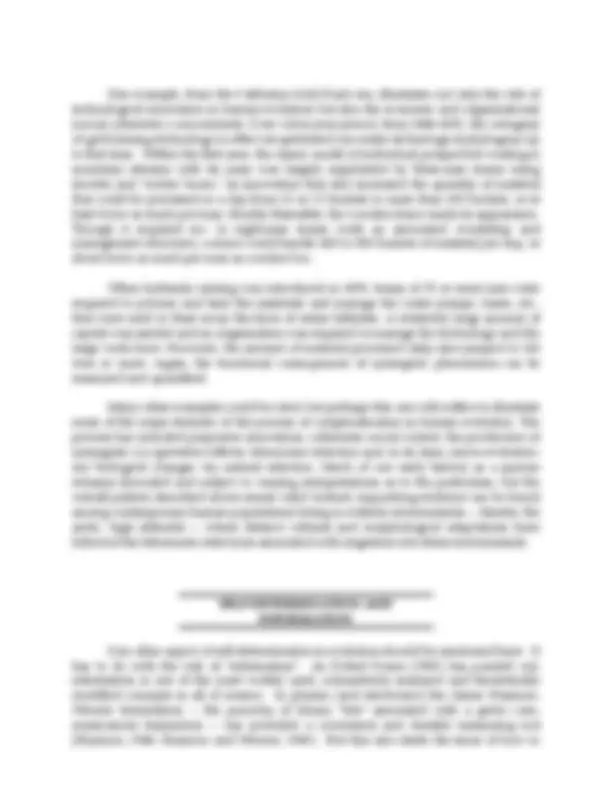
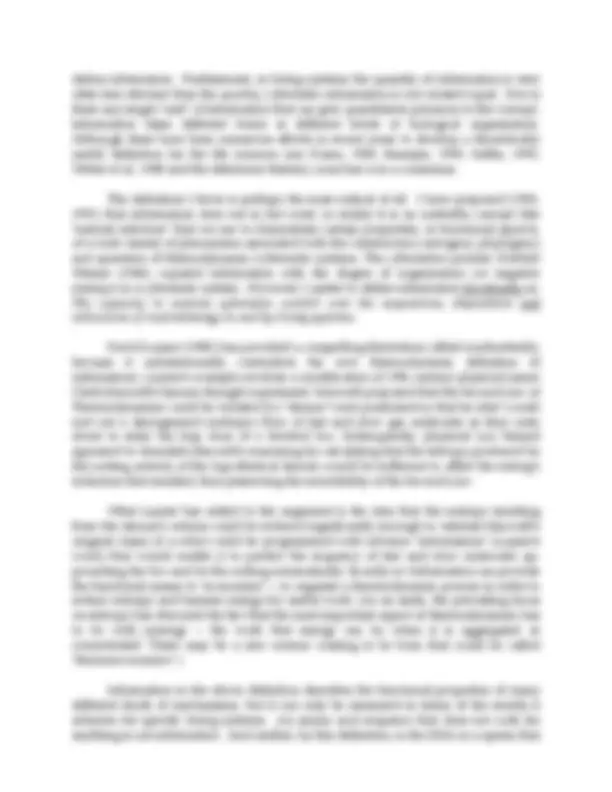
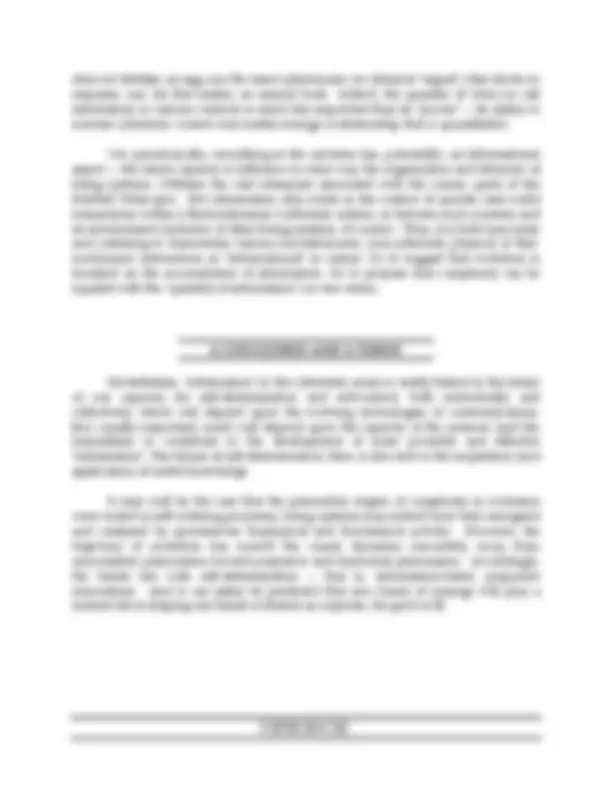








Study with the several resources on Docsity

Earn points by helping other students or get them with a premium plan


Prepare for your exams
Study with the several resources on Docsity

Earn points to download
Earn points by helping other students or get them with a premium plan
Community
Ask the community for help and clear up your study doubts
Discover the best universities in your country according to Docsity users
Free resources
Download our free guides on studying techniques, anxiety management strategies, and thesis advice from Docsity tutors
Synergy of various kinds has played a significant creative role in evolution; it has been a prodigious source of evolutionary novelty.
Typology: Study Guides, Projects, Research
1 / 49

This page cannot be seen from the preview
Don't miss anything!










































Peter A. Corning, Ph.D. Institute for the Study of Complex Systems 119 Bryant Street, Suite 212 Palo Alto, CA 94301 USA
Phone: (650) 325- Fax: (650) 325- E-mail: pacorning@complexsystems.org www.complexsystems.org
© Systems Research 12(2) :89-121 (1995)
“From nature’s chain whatever link you strike Tenth or ten-thousandth, breaks the chain alike.” Alexander Pope “An Essay on Man”
Synergy of various kinds has played a significant creative role in evolution; it has been a prodigious source of evolutionary novelty. Elsewhere it has been proposed that the functional (selective) advantages associated with various forms of synergistic phenomena have been an important cause of the "progressive" evolution of complex systems over time. Underlying the many specific steps in the complexification process, a common functional principle has been operative. Recent mathematical modelling work in biology, utilizing a new generation of non- linear dynamical systems models, has resulted in a radically different hypothesis. It has been asserted that "spontaneous," autocatalytic processes, which are held to be inherent properties of living matter itself, may be responsible for much of the order found in nature and that natural selection is merely a supporting actor. A new "physics of biology" is envisioned in which emerging natural laws of organization will be recognized as being responsible both for driving the evolutionary process and for truncating the role of natural selection. This article describes these two paradigms in some detail and discusses the possible relationship between them. Their relevance to the process of human evolution is also briefly discussed.
It has always seemed to me ironic that we are surrounded and sustained by synergistic phenomena -- combined (or "co-operative") effects that can only be produced by two or more component parts, elements or individuals -- yet we do not, most of us, seem to appreciate its importance; we take its routine miracles for granted. Nor do evolutionists, for the most part, seem to recognize the important causal role of synergy in the evolutionary process, despite the fact that we depend upon it in a myriad of ways for our survival and reproductive success, and so do all other living things. Synergy is literally everywhere around us, and within us; it is unavoidable. Here are just a few examples:
foraging and hunting activities to co-operative defense, reproduction, environmental conditioning and even thermoregulation. (More also about sociobiology below.)
In the social sciences, synergy can be found in many of the phenomena studied by economists -- from market dynamics (demand-supply relationships) to economies of scale, the division of labor and, of course, the influence of technology. Psychologists also deal with synergistic effects, ranging from gestalt phenomena to social facilitation, group "syntality," mob psychology and cult behavior. And political scientists observe synergistic effects in voting processes, interest group activity, coalition behavior, and a host of organizational phenomena, among other things.
The computer sciences are also grounded in synergy. There is, for example, the microscopic complexity of Intel's Pentium microprocessor, which embodies the equivalent of 3.1 million transistors in a substrate that is about 2.17 inches square (it varies with the temperature). There is also the current generation of word processing software, which utilizes -- synergistically -- about two million separate lines of programming code, or instructions. Or consider the multi-leveled synergy that occurs when a computer and its software are combined. We know that the result is synergistic because we also know what happens when the two are not combined, or when the computer and software are incompatible. Similarly, massively parallel computers, which in effect exploit the synergies associated with a division of labor and hierarchical control, offer performance improvements that are many orders of magnitude greater than what can be achieved by conventional sequential processing technology.
What is the principle underlying such mundane forms of magic? It is not magic at all, of course, but a fundamental characteristic of the material world that things in various combinations, sometimes with others of like kind and sometimes with very different kinds of things, are prodigious generators of novelty. And these novel co- operative effects have over the past 3.5 billion years or so produced at every level of life distinct, irreducible "higher levels" of causation and action whose constituent "parts" have been extravagantly favored by natural selection. Furthermore, in many instances these emergent wholes have themselves become parts of yet another new level of combined effects, as synergy begat more synergy.
The formal hypothesis is that synergistic effects of various kinds have been a major source of creativity in evolution (see Corning, 1983); the synergism hypothesis asserts that it was the functional (selective) advantages associated with various forms of synergy that facilitated the evolution of complex, functionally-organized biological and social systems. In other words, underlying each of the many particular steps in the complexification process, a common functional principle has been at work.
The recently developed theories of self-organization would seem to be orthogonal to this functionalist, selectionist theory. Mathematical modelling work in biophysics, utilizing a new generation of non-linear partial differential equations, has produced a radically different hypothesis about the sources of biological order. As articulated by Stuart Kauffman in an important new synthesis (Kauffman, 1993), much of the order found in nature may be "spontaneous" and autocatalytic -- a product of the generic properties of living matter itself. Kauffman envisions a new physics of biology in which the emerging natural laws of organization will be recognized as being responsible both for driving the process and for truncating the role of natural selection. Natural selection in Kauffman's paradigm is viewed as a supporting actor.
This article will explore the relationship between synergy and self-organization in some detail in the hope of shedding additional light on how complex systems have evolved and how they may be expected to continue doing so over the course of time. The relevance of these two major theoretical paradigms to the process of human evolution will also be briefly discussed.
Complexity seems of late to have become a buzzword. There have even been popular books chronicling the research and theory that have burgeoned in this category (Lewin, 1992; Waldrop, 1992). Nevertheless, the underlying theoretical challenge is not new. Attempts to explain the origins and evolution of living systems can be traced back at least to the Old Testament. Even a concept as fashionable as autocatalysis can be found in the writings of Aristotle, the first great biologist, who developed what has become an enduring theme in western natural science. Aristotle postulated an intrinsic directionality, or unfolding process in nature (orthogenesis), which was distilled in his concept of physis. Aristotle also inspired the concept of an ascending ladder of perfection, or hierarchy, that later came to be associated with the Latin term scala naturae (Granger, 1985; Lovejoy, 1936).
At the beginning of the 19th Century, the French naturalist Jean Baptiste de Lamarck postulated a "natural tendency" toward continuous developmental progress in nature, energized by what he called the "power of life" (Lamarck, 1963 [1809]). Likened by Lamarck to a watch spring, it involved the idea that living matter has an inherent developmental energy.
Orthogenetic theories of evolution reached an apogee of sorts during the 19th century with the multi-volume, multi-disciplinary magnum effort of Herbert Spencer, who was considered by many contemporaries to be the preeminent thinker of his era. Spencer formulated an ambitious "Universal Law of Evolution" that spanned physics,
More broadly, the question is: Why does complexity exist? Why have various parts aggregated over time into larger, more complex wholes? And why have many wholes differentiated into various specialized parts? For that matter, what is complexity? And, in the context of modern biology, what are wholes, and parts? The accumulating data on mutualism, parasitism, colonialism, social organization, coevolution and the dynamics of ecosystems have revealed many nuanced interdependencies and have blurred the supposedly sharp demarcation lines among various biological units.
Physicist Larry Smarr (1985) has pointed out that complexity is in reality a multi- dimensional, multi-disciplinary concept; there is no one right way to define and measure it. A mathematician might define it in terms of the number of degrees of freedom in computational operations. A physicist might be concerned with the number and frequency of interactions in a system of interacting gas molecules. The systems theorists of the 1960s were fond of using the rubric (suggested independently by mathematicians Alexei Kolmogorov and Gregory Chaitin) of "algorithmic complexity" -
John Tyler Bonner, in his recent book on the evolution of complexity (1988) suggests that biological (and by extension social) complexity should also be defined in terms of the functional nature of living systems. What is most salient about biological systems is not just the number of parts, or even the number of interconnections among the parts, Bonner argues, but the division of labor (and the combining of capabilities) which result; these are the distinctive hallmarks of biological complexity. In other words, biological complexity should be associated with the functional synergies that it produces.
In recent years there has also been increasing acceptance of the views of biologists Ludwig von Bertalanffy (1950, 1967), W. Ross Ashby (1952, 1956), C.H. Waddington (1962, 1968), Paul Weiss (1971) and others that biological complexity is characterized by cybernetic properties; it is not just ordered but also organized (see also Norbert Weiner, 1948; William T. Powers, 1973 and James G. Miller, 1978). That is, biological (and social) systems are distinctive in being goal-oriented (or teleonomic), hierarchically-organized and self-regulating (they display processes of feedback control), as well as being uniquely self-developing and self-determining. The physical
chemist Engelbert Broda (1975) stressed the functional imperatives: "The more the division of labor was developed [in evolution], the more important became intercellular and interorganismal communication and control. Hence, for an understanding of more complicated systems, thermodynamics and kinetics must increasingly be supplemented by cybernetics, by applied systems analysis." In hindsight, Broda might have added molecular (morphogenetic) and intracellular communication and control to the list of biological processes with cybernetic properties.
One other distinctive feature of complex living systems is that they cannot be fully understood, nor their evolution and operational characteristics fully explained, by an exclusive focus either on the system as a "whole" or on the component "parts". Though the long-standing "holism-reductionism" debate in the sciences still lingers, chemist Michael Polanyi's classic article "Life's Irreducible Structure" (1968) remains the definitive peace-making effort. Polanyi noted that, in the process of constructing a complex living system, the causal dynamics are in fact multi-levelled. On the one hand, the properties of the whole are constrained and shaped by the properties of the parts, which in turn are constrained and shaped by the lower-level properties of their constituent raw materials, and by the laws of physics and chemistry. To a devout reductionist, this is a truism which modern science daily reconfirms.
On the other hand, the extreme reductionist argument that an understanding of the parts fully explains the whole leads to what C.F.A. Pantin called the "analytic fallacy." Polanyi pointed out that a whole also represents a distinct, irreducible level of causation which "harnesses," constrains and shapes lower level parts and which may in fact determine their fates. In effect, wholes may become both vessels and selective fields for the parts -- and may even come to exercise hierarchical, cybernetic control over the parts.
Moreover, wholes can do things that the parts cannot do alone. An automobile cannot be fully understood or its operation explained by separate descriptions of how each part works in isolation. Not only is the design of each part affected by its role and relationship to the whole but its performance and functional consequences may only be comprehensible in terms of its interaction with other parts and the whole. (See the discussions in Corning, 1983 and Haken, 1973, 1977, 1983; also, cf., the concept of "interactional complexity" in Wimsatt, 1974.)
Thus, an automotive engineer must always look both upward and downward (and horizontally) in the hierarchy of causation when trying to comprehend the operation of any part. And the same applies to the students of living systems. Evolution has produced several emergent levels of wholes and parts. Furthermore, the power and impact of these emergent wholes has greatly expanded over the course of time; complexity has been at once a product of evolution and a cause of evolution (an important point to which we will return below).
was to show that there is a class of systems in nature that are able to defy the inherent tendency of the physical world to devolve toward a state of thermodynamic equilibrium, or maximum disorder (entropy).
Prigogine and his co-workers, elaborating on the earlier insights in Erwin Schrödinger's remarkable book What is Life? (1944), developed the theory that "dissipative structures" are able to circumvent the Second Law by being "open" or energy-processing in character. They feed on throughputs of energy to sustain order or "negative entropy" and can remain in a sustained condition of disequilibrium. Dissipative structures, according to Prigogine, are also self-organizing. They arise spontaneously and may also spontaneously evolve toward greater complexity (shades of Lamarck and Spencer). This may occur when an open system is driven so far from an equilibrium condition that nonlinear discontinuities, or threshold instabilities may occur that will transform the system in the direction of greater complexity and more structural stability. In thermodynamic terms, a complex open system such as a human organism is "a giant fluctuation stabilized by exchanges of matter and energy" (Prigogine, et al., 1977:p.18). Moreover, Prigogine envisioned this process as having been cumulative historically. At each branch point, or "bifurcation," existing structures trigger the process that leads to new, more complex and more stable forms of order.
Where is natural selection in this model? Prigogine has not, to my knowledge, addressed explicitly the relationship between his theory and the functional and adaptive characteristics of biological organisms. However, it is obvious that thermodynamic considerations must be one of the priorities of natural selection. Indeed, the thermodynamic nature of living systems imposes the adaptational requirement for energy capture, and living systems have developed a diverse array of mechanisms for doing so. But that's not all there is to the problem of survival and reproduction. Living systems also have a material structure and organization and must earn a living in the environment. Thus, any self-organizing properties in such systems are also subject to the vicissitudes of the environment and the functional requirements for survival. Living systems must adapt; they must submit to the ultimate "censorship" of natural selection.
The case for autocatalysis and self-organization in evolution has also been advanced by the important work of biophysicists Manfred Eigen, Peter Schuster and their colleagues (1979, 1981). Their focus is the early stages of prebiotic and macromolecular evolution, and their pioneering use of non-linear dynamical systems models has provided a new perspective on evolution.
Several of their contributions should be noted. First, they recognized that, in the initial stages of evolution, co-operative processes had to predominate; the construction of primitive organic molecules (monomers) required the integration of component materials, just as the creation of more complex polymers required monomer mergers. In
fact, they argue, it was only after the evolution of biochemical structures which possessed the informational capabilities needed for self-replication that Darwinian competition arose.
Eigen, Schuster and their co-workers also developed a case for the proposition that autocatalysis and self-organization were prior to mutations (indeed, prior to genes) and were therefore more fundamental sources of innovation in the formative stages of evolution (though environmental challenges were also obviously a stimulus).
They also identified the existence of what amounts to an evolutionary super- charger -- autocatalytic "hypercycles" that they believe accelerated the start-up phases of evolution. These co-operative phenomena, which have been empirically verified in contemporary examples of viral activity (1981), involve a cyclic coupling of catalytic processes in such a way that they reinforce and augment one another. Eigen and Schuster also proposed that hypercycles may account for how organic substances of increasing complexity have been able to circumvent what is known as the "complexity catastrophe." This constraint might have imposed an organizational ceiling on evolution, they maintain, were it not for hypercycles. If this is so, it provides an important example of the role of synergy in evolution. (However, Stuart Kauffman has a somewhat different view of this issue. See below.)
Finally, Eigen and Schuster developed the concept of what they call a pre- Darwinian phase of natural selection (they equate natural selection with individual competition) in which successful hypercycle participants and rudimentary forms at the viral level of organization formed "quasi species" that were selected as units in what amounted to a series of phase transitions. In other words, selection at this stage may have been more of a collective phenomenon involving categorical "yes-or-no" choices rather than competitive "better-or-worse" choices (but see the critique by Wicken, 1985).
The case for autocatalysis and self-organization has also been buttressed by chaos theory, or more specifically, the aspect that Stuart Kauffman (1991) has called "anti-chaos". Chaos theory is a new scientific paradigm built on non-linear dynamical systems models. It is focussed on a class of phenomena that involve unpredictable but deterministic dynamical interactions.
Among the important discoveries made by chaos theorists is the fact that dynamical systems have many emergent, systemic properties that arise from the interactions among the parts -- properties that cannot be predicted or observed by isolating the parts (synergy). But more important for our purpose, chaotic systems may also spontaneously "crystalize" stability and order under various circumstances. Indeed, in certain configurations of random Boolean (or on-off switching) networks, dynamical systems may spontaneously evolve stable patterns. In the three-dimensional "state spaces" that are used to model Boolean network processes, these steady states are zero- dimensional points that are referred to as "dynamical attractors." In effect, these are models of self-organized synergy.
The basis for Kauffman's heretical conclusion is the broad-ranging application (by himself and other workers) of dynamical systems models to various domains of biology, including the origins of life, the process of adaptive evolution, ontogeny, metabolism, differentiation, protein evolution and the immune system, among other things.
Some of Kauffman's results are not particularly controversial, because they build on a long tradition in biology that has had as its focus the elucidation of various laws, constraints and emergent properties associated with complex systems. The assertion that natural selection is constrained by the laws of physics and thermodynamics challenges no orthodoxy. What Kauffman adds to this tradition are some law-like constraints associated specifically with the dynamics of complex systems.
On the other hand, Kauffman's overarching conclusion is controversial, even gratuitously so. The proposition that autonomous, autocatalytic processes are the primary sources of order in nature, and that natural selection merely fine-tunes the results, represents a radical reformulation of evolutionary theory. Yet this conclusion is not the ineluctable result of the work Kauffman so carefully explicates. It is, as he acknowledges, a "bold leap" beyond the models (and a limited body of empirical support). Nor, as we noted above, is his hypothesis new. The vision of evolution as being self-propelled, or as a self-determined unfolding process, is a venerable theme in natural philosophy, tracing its roots at least to Empedocles. (Indeed, Kauffman's effort is only the most extensive and rigorous of a skein of more or less explicitly orthogenetic, anti-Darwinian theorizing in recent years. See, for instance, Jantsch, 1980; Csányi, 1989; Salthe, 1993.)
Another variation on the non-selectionist theme is the thermodynamic cum informational theory of evolution developed by Daniel Brooks, E.O. Wiley (1988) and various colleagues (1989). These theorists propose an explanation for biological evolution that relegates natural selection to the role of facilitating non-essential "enhancements". The three "essential" attributes of living systems, they claim, are relative autonomy from the environment ("phase separation"), the ability to replicate and the production of structural information. "Evolution is quite possible without natural selection and adaptation" (cf., Wicken, 1987; Fivaz, 1991; Salthe, 1993).
Many years ago, Theodosius Dobzhansky voiced what still stands as the most important scientific objection to such orthogenetic and non-selectionist visions. The basic problem, he noted, is that these theories implicitly downgrade the contingent nature of life and the basic problem of survival and reproduction. In fact, they explain away the very thing that requires an explanation: "No theory of evolution which leaves the phenomenon of adaptedness an unexplained mystery can be acceptable" (1962:p.16). There's the rub. Order is not a synonym for adaptation, and adaptation in nature depends on functional design.
Nor can the need for adaptation be so lightly dismissed as Brooks and Wiley do. For one thing, energy is not a free good; it must be captured and converted to various organic uses. Also, the thermodynamic processes and structures that characterize living systems are never "autonomous," or independent of environmental contingencies. It matters a great deal whether or not these systems are located on land or in water, in the Arctic or the tropics, in an oxygenated or anoxic environment, and whether or not they are subject to competition, or predators, or parasites. Life in the real world is always contingent and context dependent. Indeed, orthogenetic theories are often obtuse, or cavalier about the prevalence in evolutionary history of extinctions. Finally, "information" and "structure" are not functional equivalents; what gets tested in the environment are the properties of the structures themselves, not their informational "content". (See the discussion in Section VII below.)
Self-organization is an undisputed fact, and the case for autocatalysis, especially in the early stages of evolution, is compelling. Indeed, Kauffman's work strengthens the case. His formulation suggests that life may have "crystallized" initially in a collective phase transition leading to connected sequences of biochemical transformations -- an alternative to the hypercycle concept. (Elsewhere, Kauffman likens the process to a set of pegs scattered on a floor that are gradually tied together to form a net.) If this scenario is correct, life may have an "innate holism" (synergy); it began as an integrated, emergent property of complex systems of polymer catalysts. Also, it may have been more easily achieved than we have heretofore imagined. However, Kauffman's vision does not extend very far up the phylogenetic tree, to the point where morphology, functional design and a division of labor begin to matter.
Equally important, much of Kauffman's case, despite its admirable rigor, rests on the models themselves -- on hypotheses that still require testing. At this point, some are little more than mathematical "just-so" stories. The jury is still out on a key question: To what extent are the models isomorphic with the dynamics of the real world? What is the relationship between these computer-driven equations and concrete, feedback-driven, cybernetic systems with specific functional properties and requirements? Do the quantitative , numerical relationships in the models map to the qualitative functional interactions (and logic) within and between living systems?
self-organizing processes; natural selection did not create order ab initio. It may only have bestowed a blessing on it. Nor was natural selection the exclusive designer of biological organization later on. (Indeed, I will argue below that the products of evolution have themselves become increasingly important co-designers over time, though often inadvertently, in a process that has been interactive.)
A second conclusion, one that will also be discussed further below, is that "wholes" may have been more fundamental biological entities than "parts" in terms of the process of biological complexification. In the earliest stages of evolution, the parts in fact had no meaning, no directional consequences and no selective value until they were combined into functional units. Classical competitive selection began to play a shaping role when the first self-organized reproducing wholes appeared, and it intensified in proportion to the increasing organizational and functional capabilities of various combinations of parts. It was the emerging functional capacities for replication, metabolism, damage repair, mobility, predation, defense -- all of which are products of more complex organization -- that accelerated the evolutionary arms race.
Finally, we can discern at an early stage of the evolutionary process a principle which will be elaborated upon below, namely: "competition via co-operation." Co- operation is not a peripheral survival strategy in a world governed by competition. The synergy resulting from co-operative interactions of various kinds provides the functional raison d'etre for biological organization, and for the observed evolutionary trend toward greater complexity. In many but obviously not all cases, synergy has given more complex forms a competitive edge. Let us turn then to a consideration of the role of synergy (and symbiosis) in evolution.
Before proceeding further, the relationship between synergy and symbiosis should be clarified. Both are relevant to the process of complexification, but their relationship is often misunderstood.
The word synergy is derived from the Greek word synergos , meaning "to work together." As noted above, it connotes combined effects, or the functional outcomes of co-operative interactions of all kinds. (In this context, co-operation is strictly a functional term; it has nothing to do with "altruism".) Though it is often associated with the slogan "the whole is greater than the sum of its parts," it would be more accurate to say that synergy refers to effects that the parts (or individuals) cannot achieve alone, effects that are interdependent. Wholes are not necessarily greater than the sum of their parts, just different.
Among biologists, use of the term synergy has been limited until recently mainly to certain specialized areas, such as neurochemistry, cell biology and endocrinology. (A
recent literature search of these sub-disciplines for the past five years produced some 10,958 "synergy" citations.) On the other hand, most biologists recognize the subset of synergy known as "emergent effects," as well as the synergies associated with coevolution. The term has been used somewhat more broadly in other fields, however, ranging from economics and psychology to architecture and philosophy.
The term symbiosis is also of Greek origin; it means "living together." It's use as a technical term in biology traces to the German mycologist Anton de Bary (1879), who employed it to denote the living together of "dissimilar" or "differently named" organisms in lasting and intimate relationships. His focus was on relationships, and the paradigm examples, both in de Bary's time and ever since, are the roughly 18, different species of lichen -- mutualistic partnerships between some 300 genera of fungi and various species of cyanobacteria (formerly known as blue-green algae) and green algae -- although de Bary also included in his definition what would now be called parasitic relationships.
Some biologists still treat symbiosis as a curiosity rather than as a major theme in evolution and its status remains a matter of contention. Indeed, the very definition of the term has been subject to disagreement, and there are an array of conflicting definitions in the literature. Among other things, this etymological anarchy reflects important differences about how the subject matter of the field should be defined, and about which phenomena should be included. Adding to the confusion is the fact that symbiologists are not always consistent in practice even with their own definitions.
Even if there is no consensus about how to define it, symbiosis is firmly established in biology, both as a concept and as an area of active research and theorizing; it is unlikely to be displaced by any alternative. Nevertheless, the term "synergy" may have more utility as an umbrella term for co-operative interactions. Some of the reasons are as follows:
the ability to reproduce. It was the co-operative effects -- the synergies -- produced by these organelles in combination that explains, ultimately, the evolutionary success of the eukaryotes. Symbiosis played an important role in the "how" part of the story, while the concept of functional synergy speaks to the "why" question.
Thus, in this instance as in many others, the term symbiosis (in any of its diverse definitions) does not provide a large enough umbrella to cover the full range of co- operative phenomena in nature. On the other hand, the term synergy has no such connotative constraints. It can comfortably accommodate both incremental evolution via classical neo-Darwinian point mutations and more punctuational changes via genomic fusions, which Robert Haynes (1991) has characterized as "megamutations". Likewise, it is equally at home with both of the two different modes of complexification in evolution, namely, "integration," (aggregation, fusion or "alliances" of various kinds) and internal "differentiation". (More on this subject below.) Synergy also directs our attention beyond relationships to the functional properties and fitness consequences of co-operative phenomena of all kinds -- to the data associated with a causal explanation for the evolution of complexity.
Symbiosis in general and mutualism in particular (to say nothing of the broader concept of synergy) represented at best a minor theme in biology until recently, and it certainly played no role in mainstream evolutionary theory. Some theorists considered symbiosis to be a "myth"; others viewed it merely as a small class of anomalies or oddities that in no way challenged the dominant neo-Darwinian synthesis (competition and mass selection among point mutations in individual genes); still others recognized that mutualistic, co-operative relationships might provide organisms with a competitive advantage under some circumstances (even Darwin appreciated that), but it was assumed that such phenomena are relatively rare.
During the past decade, however, a dramatic change has occurred. There has been an upsurge in research and theorizing about symbiosis, mutualism, co-operation and even synergy. Among the major developments:
A culmination of this process was a landmark international conference in 1989 on symbiosis as a source of evolutionary innovation, at which some 20 participants documented the ubiquity of symbiosis and developed the case for Symbiogenesis as a significant factor in evolution (Margulis and Fester, eds., 1991). Among the evidence presented: